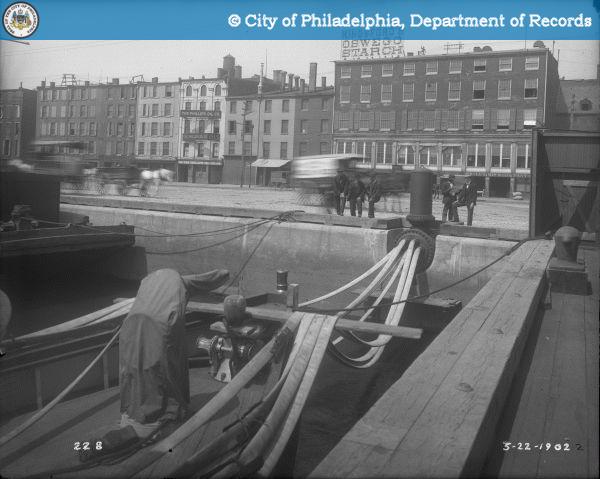Know Your Neighborhood: Fringe Arts Building
The Fringe Arts Building at Delaware Ave & Race St was built as the High Pressure Fire Service (HPFS) building in 1903. This Victorian building served the city for about 100 years, providing high-pressure water for fighting fires. Along with the high-pressure pipeline system that distributed the water, this is a major reason why Center City Philadelphia never suffered a catastrophic fire during the 20th Century.
The site previously held a salt house; a place to store and sell salt and salt fish. Built in 1705 with bricks and timbers imported from England, it was one of the first structures erected on this stretch of the Delaware.
By the end of the 1800s, Philadelphia’s regular-pressure water had become ineffective in fighting fires in increasingly larger and taller buildings in the central business district. Years of prodding by insurance companies and the Philadelphia Fire Department spurred the city to install the world’s first high-pressure water service in a major city. The system delivered water via independent pipes and red fire hydrants located on every block between the Delaware River and Broad Street, from Race to Walnut, and beyond.
The HPFS building drew water right from the river via a twenty-inch main and supplied a network of twelve and sixteen-inch mains. Seven 280-horsepower pumps were powered by engines operating on city gas—an early use of internal combustion engines for such work. Full pressure was available within two minutes from the time a fire alarm was sounded.
The system had the capacity of pushing ten thousand gallons of water a minute at up to three hundred pounds of pressure, with power to throw a two-inch stream 230 feet vertically. Fireboats on the Delaware were also used for backup. They connected to the system via a manifold that still protrudes from the sidewalk in front of Race Street Pier.
Fire losses immediately dropped after the HPFS system was operational, prompting the removal of extra insurance charges imposed on structures within the congested downtown. Other pumping stations followed around the city when the system was expanded into surrounding neighborhoods. The system’s success brought about similar high-pressure water systems in other American cities. Philadelphia’s was acknowledged as the best in the world for many years.
The fifty-six-mile system lasted until about 2005, when it was decommissioned after falling into disrepair. High-pressure water service had become unnecessary anyway due to better firefighting equipment, high-rise sprinklers and fire-resistant construction materials.
 |
| Site before HPFS |
Today






No comments:
Post a Comment